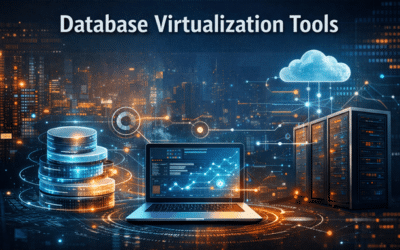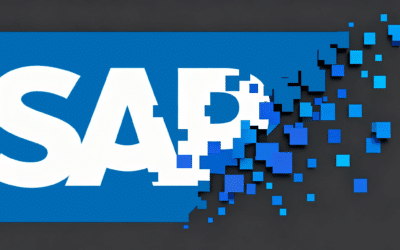
How to Value Stream DataOps?
24
NOVEMBER, 2021
by Daniel Paes
Enhancements on data ingestion made evident the amount of data lost when generating insights. However, without guidance from methodologies like The DataOps Manifesto, some companies are still struggling to blend data pipelines from legacy databases, such as an ADABAS database, with new ones, such as MongoDB or Neo4j.
And it’s always good to point out that these legacy systems aren’t easy to let go of. Most of them are responsible for core processing (like the bank transactions in Cobol, for example). As such, it’s not attractive to change them because it’s too problematic.
With that said, I believe the integration of new applications and legacy databases is one of the biggest challenges for data-driven companies. However, there have been significant advancements in the methodologies and frameworks for data ingestion over the last few years.
Enhancements on data ingestion made evident the amount of data lost when generating insights. However, without guidance from methodologies like The DataOps Manifesto, some companies are still struggling to blend data pipelines from legacy databases, such as an ADABAS database, with new ones, such as MongoDB or Neo4j.
And it’s always good to point out that these legacy systems aren’t easy to let go of. Most of them are responsible for core processing (like the bank transactions in Cobol, for example). As such, it’s not attractive to change them because it’s too problematic.
With that said, I believe the integration of new applications and legacy databases is one of the biggest challenges for data-driven companies. However, there have been significant advancements in the methodologies and frameworks for data ingestion over the last few years.
Why Is It So Essential to Have Precise Data?
With optimized data ingestion pipelines, you can become better at decision-making. At the same time, updating your subject-focused legacy systems into modular applications sounds promising, right?
The good news is, doing so isn’t a far-fetched dream! Thanks to advancements around computing power, it’s now possible to do way more with very little. We can now deconstruct bloated applications into slimmer versions.
Using concepts that used to be possible only in theory, we can now ingest data from unusual places. For example, we can have an automated pipeline to ingest data from digitized documents thanks to OCR. How cool is that?
In this post, I want to help you understand how your organization will benefit from a mature DataOps environment. First, I’ll present what DataOps is and why it’s not only DevOps for data. Then, I’ll explain some significant benefits that come from mapping the value streams for your own DataOps practice. Last, I’ll present some considerations when applying the DataOps framework to your team.
What Is DataOps?
It’s hard to provide your users with the most accurate metrics for existing dashboards with multiple data suppliers. It gets worse when your legacy database has so much technical debt that carrying out something as simple as creating a KPI is an absolute nightmare.
And here’s where DataOps comes to the rescue! It makes it possible for your users to consume your data faster and in an automated environment integrated with the most updated version of your data suppliers. Pretty neat, right?
I like to remember that this isn’t something new, as the decision support system (DSS) consists of an automated environment for your analytics pipelines. And I believe that DSSs always played an essential part in any company. The benefits for stakeholders include getting a complete understanding of your supply chain process or knowing faster which department or product is more profitable, to list a few.
The data suppliers load these systems, which can be any source of information for your needs. Some examples of information provided by data suppliers include
- Human resources data
- Agency campaign data
- Supply chain IoT devices
- Billing systems
- Server and traffic logs
DataOps vs. Decision Support Systems
You often see orchestrated data pipelines from different data suppliers in legacy DSSs. So, each data supplier loads its data into this centralized database. But these independent data flows cause inconsistent data, making it hard to trust the DSS’s presented results.
What DataOps facilitates is better results with an optimized DSS! Thanks to the agile approach, DataOps reinforces a more customer-centric approach when compared to DSS because of its modular architecture. In addition, DataOps eases constraints on scalability, automation, and security thanks to the reuse of components used by other data pipelines.
These components can vary from simple database connectivity to a business rule used by the finance department that human resources could benefit from. All of this is thanks to repositories that are centralized, standardized, and reusable.
Where DataOps Intersects and Where It Strays From DevOps
While DataOps seems like DevOps for data, I like to remember that the goals of DevOps and DataOps are different, although the methodologies share the same principles.
DevOps focuses on loosening development to include operations. On the other hand, the goal of DataOps is to make analytics development more functional. DataOps uses statistical process control, the mathematical approach used in lean manufacturing, DevOps disciplines, and best practices from the Agile Manifesto.
With these strategies in place, you can decouple your environment; DataOps makes it easier to detach your business logic and technical constraints from your data pipelines. As a result, you’re more confident in your data while enabling your teams to react better to data trends.
You’ll benefit from the efficiency and results faster while designing your data pipeline components. And your teams will be more focused on delivering value rather than being tied down by technical decisions made in the past.
Also, I always like to bring up the security gains resulting from proper deployment of DataOps: robust, secure systems that are less prone to breaches and leaks!
Benefits to Consider While Mapping Your Value Streams
Now that we know what DataOps is about, I want to present the benefits of correctly mapping your value streams.
My focus here is the benefits for your data pipelines, although they can also apply to your application deployments. From the business perspective, the principal value added by DataOps adoption is the ability to explore new data sources rapidly.
Here are the advantages of the value added to the customer when mapping your value streams.
Enhanced Control Thanks to Technical Decoupling
As I mentioned before, data suppliers are any source applications with relevant data for your analysis. In other words, they’re data entry points that feed your data pipeline.
These applications produce data in a raw state. And as the name implies, this data should be left as untouched as possible. It’s beneficial in cases of reprocessing or data lineage analysis.
This data needs additional processing steps to remove unnecessary noise from it, as its original form might not be a good fit for your needs. However, from this output, you can extract the necessary metrics to cover the needs of your users.
I also want to bring up one of the values from conscious decoupling: its robust automated control of each component’s data pipeline. This orchestration brings up extra quality measures, making it possible to increase productivity given that your users won’t need to perform repetitive tasks.
Fast Exploration of Existing and New Data Suppliers
On legacy systems, the development of new pipelines is chaotic, as previously mentioned. The DataOps approach also enables fast exploration of your data suppliers.
DataOps makes it easier to create conformed components thanks to its modular deployment. What I mean by that is that you can reuse already deployed and tested components.
In other words, DataOps enables a mindset of continuous improvement. Therefore, it will drastically lower your development costs and increase your return on investment at the same time.
Your team will handle more challenging tasks on bringing business value, not with daily data wrangling activities. As a result, you get an instant productivity boost thanks to the automated deployment of your application.
Reliable Data Governance
As a result of the automated data pipelines deployed by DataOps, it becomes easier to trace how your users consume your data. This information can help you quickly answer recurring questions.
Your users can see where the business logic is in a blink of an eye. Moreover, the reference between its canonical and technical implementation name becomes easy to absorb since new analysts getting onboarded to your projects makes it an appealing source for your data profiling.
As a result, a solid datalog of your data suppliers is a mandatory step to think about when mapping your value streams, in my opinion. It becomes easy to manage your data pipelines when you create an enterprise-level conformed business catalogue. All this structured information about your data suppliers creates an intuitive data catalogue.
This information, also known as metadata, provides the business context where this data gives its value. So, in other words, your insights would become more accurate.
Important Considerations About Your Own DataOps Deployment
What we’ve seen so far shows how conformed detached modules enable a more robust data catalogue for your company. In addition, the coherence among your analytics components clarifies where you can enhance your data ingestion.
I always like to remember that these improvements don’t come for free. As you’ll react faster and more wisely, be ready to reshape some of your company’s internal processes. Bear in mind that it’s hard to teach an old dog new tricks. So, expect some resistance from more experienced teammates.
A self-healing data pipeline scales horizontally or vertically when needed. So, you can add more units for processing power (known as horizontal scaling) or enhance your clusters (known as vertical scaling) when your sets start to have some bottleneck issues while processing your data.
Remember the rule of thumb: It gets easier to enrich your outputs when you’re fully aware of your data scope. So, in addition to its modular components, DataOps enables actions like masking and obfuscating your data to occur more fluidly in the early stages of its processing.
With DataOps, you’re building up a trustworthy data pipeline capable of reacting to new concepts and technologies at the same speed as your business’s evolution.
Final Thoughts
In this post, I gave an overview of what you’ll gain by correctly deploying DataOps. The result is a mix of business and technical added value because you’ll have slim and robust orchestrated data pipelines.
I started by presenting what DataOps is and what business value it brings. Then, I explained where it intersects and where its goals differ from agile and DevOps methodologies.
We also took a quick look at what I believe to be the short-term benefits from the correct deployment of a mature DataOps implementation and how automated deployments can add technical value.
Last, we saw some challenges that your team may face when you adopt DataOps. For example, your unit may be resistant to adopting new technologies and methodologies. However, we also saw the benefits of a correct deployment as a concise data catalogue.
Just remember that you must completely implement DataOps’s requirements. So, don’t expect to have a reliable DataOps implementation with partial deployments of agile or DevOps disciplines.
Take a look at Enov8 and how it can relieve the constraints for your DataOps journey here.
Post Author
This post was written by Daniel Paes. Daniel is a data-focused professional with interest in AI for cognitive enhancement. He’s an evangelist on the awareness of security risks, and data privacy.
Relevant Articles
Database Virtualization Tools: 9 to Know About in 2026
Organizations evaluating database virtualization tools are usually trying to solve a very practical problem: how to give teams fast, safe access to realistic data without copying production databases over and over again. Whether the driver is test automation,...
Enterprise Release Management: A Comprehensive Guide
Enterprise Release Management (ERM) is a set of end-to-end practices that enable large organizations to effectively manage software releases. ERM is uniquely designed for the challenges of multiple teams building and releasing software simultaneously. ERM establishes...
Your Essential Test Environment Management Checklist
“Test Environment Management Checklist.” Yep, that sounds like a mouthful, but don’t let that discourage you. The idea here is quite simple—adopting a checklist to evaluate the soundness of your test environment management approach. Even though the idea sounds simple...
A Detailed Guide to SAP Data Masking
SAP systems handle some of the most sensitive data in the enterprise: financial transactions, HR information, supplier records, customer profiles, operational details, and more. For that reason, copying production data into non-production systems without modification...
Release vs Deployment Management: What’s the Difference?
In the always-an-adventure world of IT service management, there are several key processes that are essential for delivering high-quality services to customers and end-users. Two of the most critical processes are release management and deployment management....
7 Tools to Help with Application Rationalization
Application rationalization is the process of identifying which applications an organization should keep, update, consolidate, or retire. Think of it as a financial adviser, but instead of your investment portfolio, it's your application portfolio. Most companies take...










